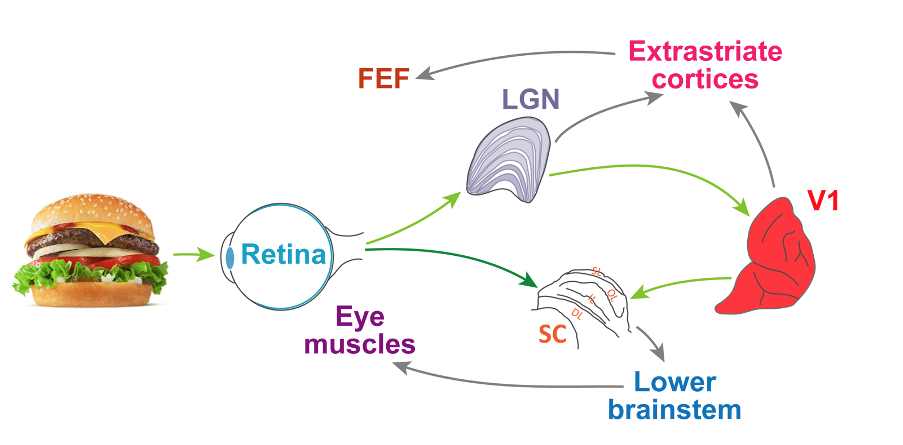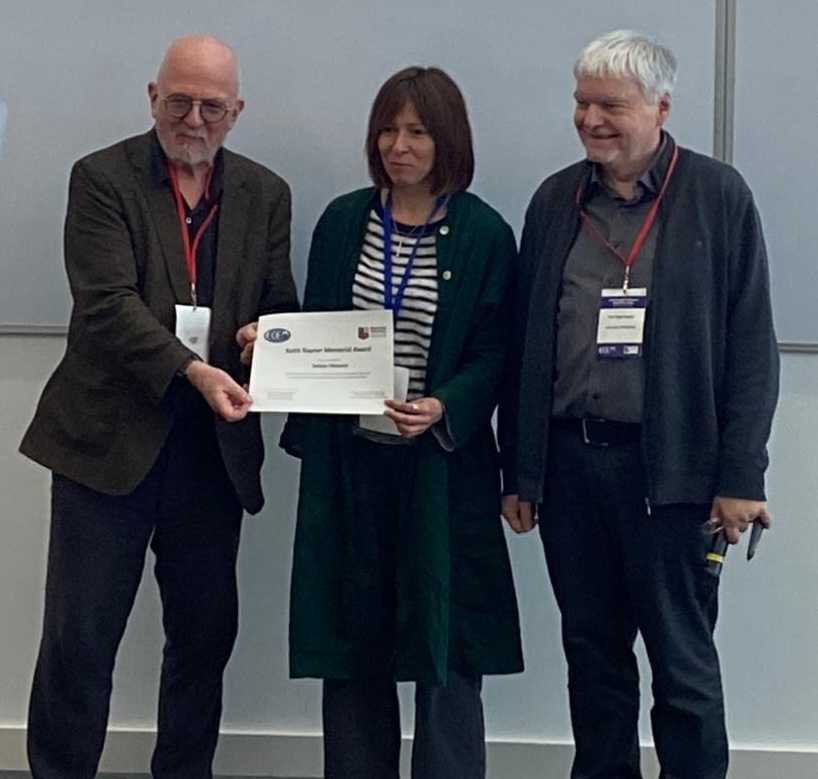
Our lab participated in the 22nd European Conference on Eye Movements, which took place in beautiful Ireland!
We had two oral presentations and one poster presentation at the conference.
In one oral presentation, Tong presented very intriguing transient changes in superior colliculus (SC) neuronal activity that we observe whenever the brain transitions from gaze fixation to saccade generation. Specifically, we normally record from peripheral SC neurons and notice expected saccade-related bursts. However, before the saccades, there needs to be a state transition from the initial fixation condition. So, we decided to record SC activity upon the “go” instruction for the saccade, instead of the saccade itself. When we did that, we found that the neurons transiently paused with very short latency. When we then recorded from foveal neurons instead of peripheral ones, we found that these neurons actually burst at the go signal, and they did so even before the transient pauses in the peripheral neurons. So, it is as if the foveal neurons jumpstart the state transition from fixation to saccade generation. Interestingly, the transient change in peripheral SC neurons that we discovered did not take place simultaneously in the primary visual cortex (V1). This is consistent with other evidence from our lab of important differences between SC and V1 visual neuronal activity.


The other oral presentation that we had at the conference was given by Tanya, who presented surprising observations that multisensory stimulation can “unmask” latent visual signals in the brain that bypass the primary visual cortex. This work touches on important questions on the roles of different anatomical pathways from the visual input to the oculomotor output, which we are heavily interested in.

Tanya also presented a poster at the same conference, describing competitions between lateralized sound and visual stimuli in driving saccadic eye movements. This work was directly motivated by the work in her oral presentation, and it also helps us complement this work when interpreting the underlying mechanisms.

We had a very fulfilling conference experience. For us, perhaps the most important achievement was that Tanya won the Keith Rayner Memorial Award for Best Oral Presentation at the conference! The criteria for this award included excellence in not only the science of the talk, but also in the presentation style itself as well as the post-presentation discussion period. We are very grateful for the recognition, and we always try our very best in both our science and our communication of it to the rest of the world.

